We can imagine how long it takes to create teams in Microsoft Teams, especially in large organizations. At the same time, you may struggle with a mess in teams, many unused workspaces, and other challenges of uncontrolled team creation. Today we will tell you how to automatically create teams from Microsoft Teams templates using the Power Automate Platform.
- Why do you need to automatically create teams with Power Automate?
- Power Automate: Create teams from SharePoint List
- Advanced Flow with Microsoft Teams templates
- Approval process for team creation with Forms and Power Automate
- Set Up a Multiple-Stage Approval with Microsoft Teams templates
- Power Automate: Create teams from a template using any 3rd party app
Why do you need to automatically create teams with Power Automate?
To begin with, let’s understand why you need to automatically create teams using Power Automate and how you can improve collaborative processes by streamlining workflows.
Avoid Teams sprawl
Let’s suppose 100 managers work in your organization and each of them can create a team in Microsoft Teams. Then, they create many new channels for different purposes. What happens in the end? The endless number of unused teams, the mess in the workspace, loss of essential information, and so on. What if you have thousands of employees?
Therefore, automatic flows in Power Automate will help structure the process of team creation. Using advanced flows with team creation from templates, you can be sure that each created team is structured according to the established rules. As a result, your employees understand where and how they need to share information and collaborate on projects.
Save time
The next advantage is of course saving work time. In our blog, we are discussing how to build flows in just a few minutes. By using process automation, you can scale the creation of teams and run the work in just a few minutes. And instead of performing routine tasks, you can stay focused on important work processes.
Avoid overloading your IT without impeding user experience
Instead of limiting end-users experience and prohibiting the creation of teams, you can create Teams templates with pre-built channels, customized tabs, files, and much more. So, your colleagues will be able to automatically create teams and work in a structured workspace without restrictions and Power Automate technology will help to scale the system across the entire organization.
Power Automate: Create teams from SharePoint List
But let us go from theory to practice and build teams from Microsoft Teams templates using Power Automate.
Suppose you are a project manager. You manage multiple projects and when you start a new one, you need to quickly create a workspace for the future project team. Without automation, you’ll spend a lot of time creating new teams, which can postpone the project launch.
Let’s look at one way to automate the creation of teams using SharePoint Lists.
Step 1. Create a SharePoint List, where you will define all the upcoming projects for which you need to create a workspace. Create a column with the name of the project, as well as a column with the project owner.
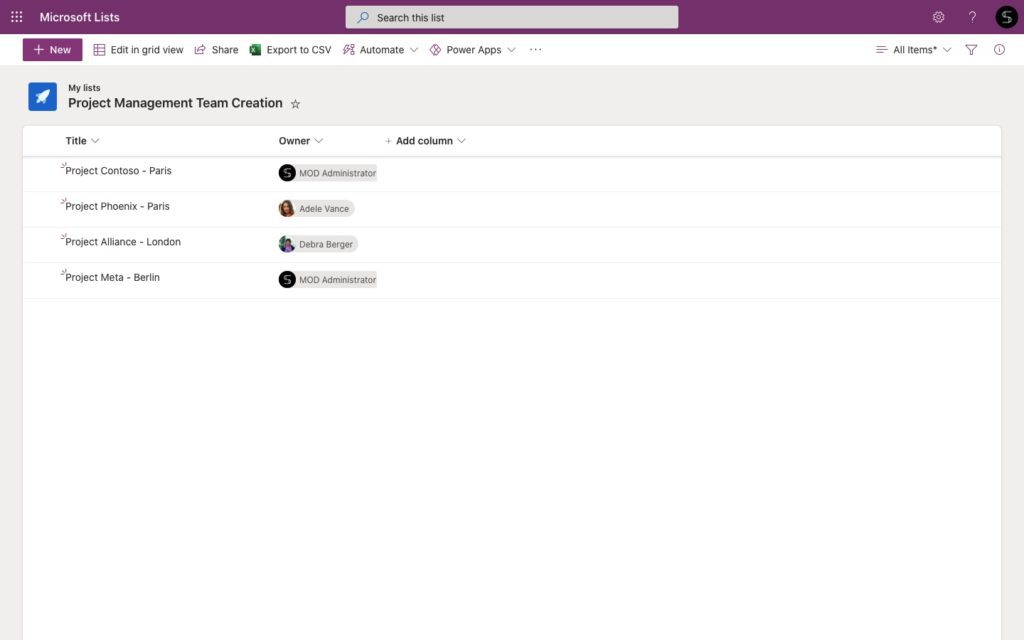
Step 2. Open Power Automate and create Manually Triggered Flow. Choose an action – Get SharePoint Items. Add a link to your SharePoint Site with the list of projects.
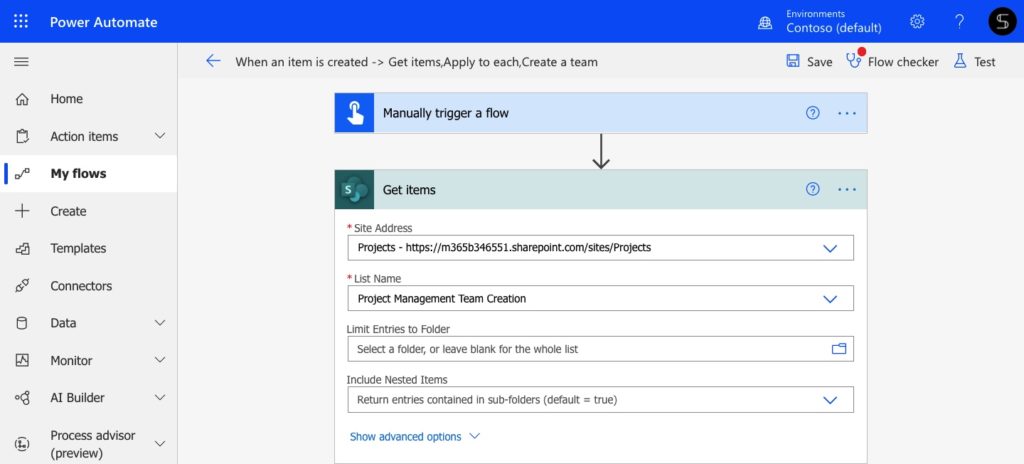
Step 3. Next, find Microsoft Teams Connector and choose an action – Create a Team. With Dynamic Content, you can customize a name for the future team in Microsoft Teams based on the “Title” column. Next, add a team description. For example, “Owner is – “, and add the “Owner” column.
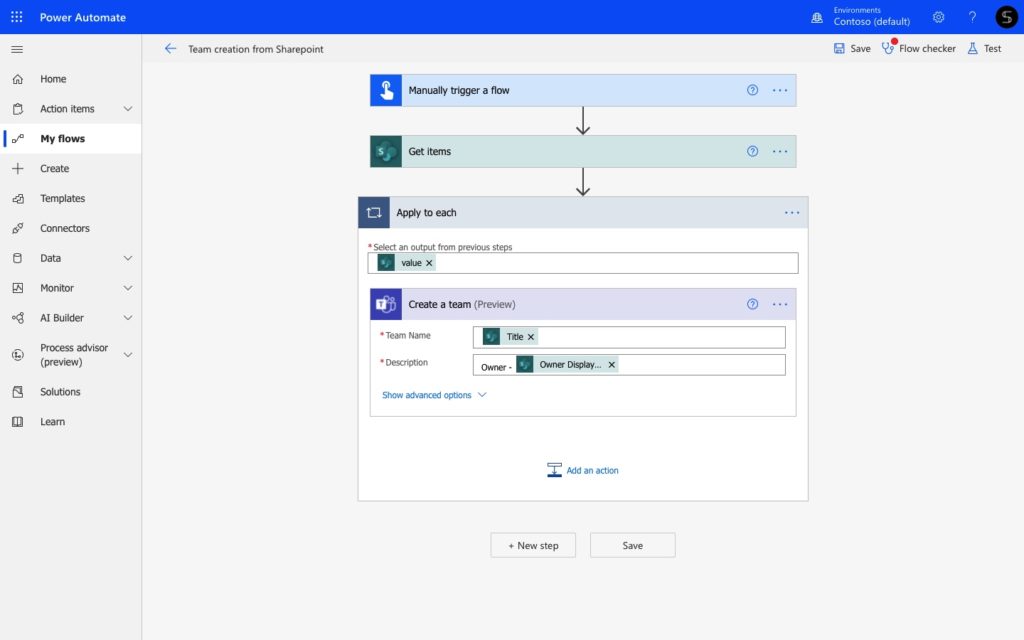
Step 4. Excellent, you can run your Flow! In just a few seconds, 4 new teams will appear in your Microsoft Teams environment. What if you needed 40? Imagine how you shorten the time?
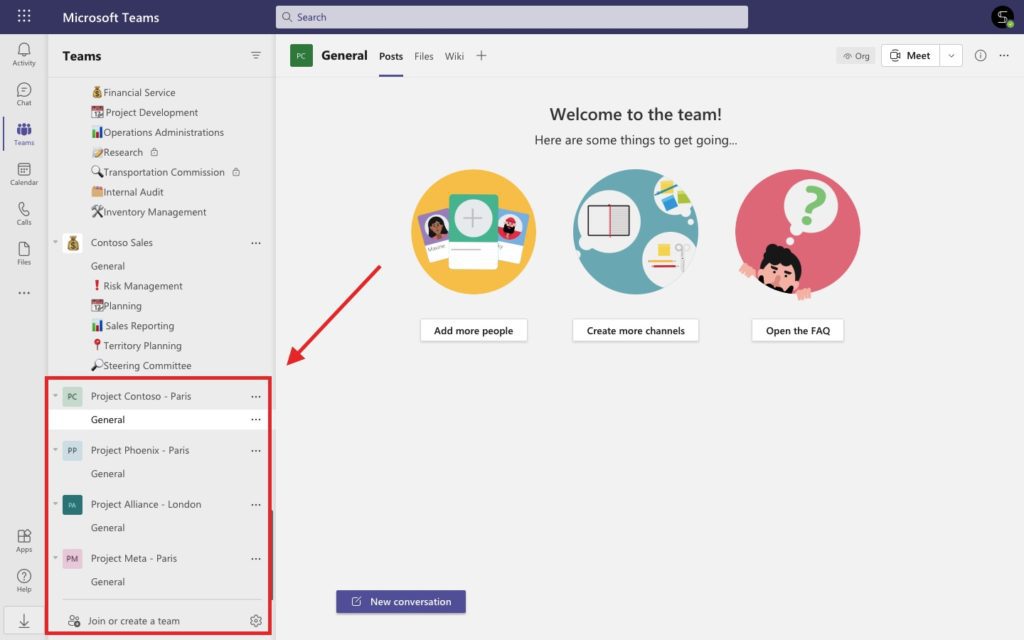
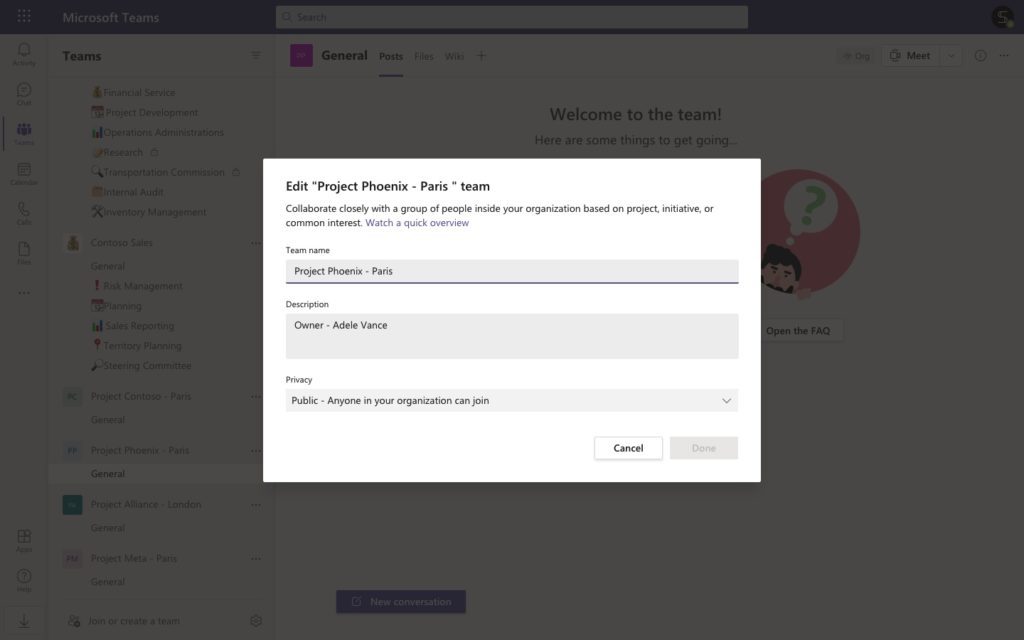
Advanced Flow with Microsoft Teams templates
Here is the easiest way to automate team creation. At the same time, it still does not make a lot of sense. Yes, you will have multiple teams with the General channel in a few seconds. But there is no customized content, other channels to share content, and governance settings. For this reason, you can build the same flow but with team creation from Microsoft Teams templates.
With the nBold connector, you will be able to create dozens of teams from pre-built templates. Copied standard and private channels, tabs with apps, ready-to-go Planner, governance policies, and much more.
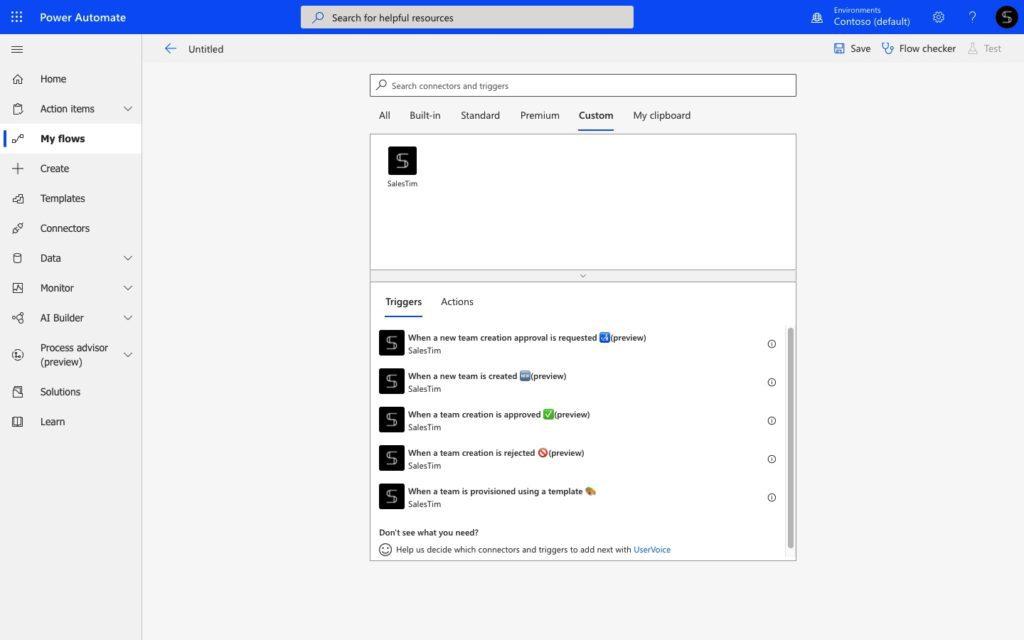
Let’s see how it works.
Step 1. Build a Project Management template from an original team. At this step, you can manage all needed content: create standard and private channels, customize tabs with apps, upload files and folders, and manage governance policies, such as a naming convention or permanent membership.
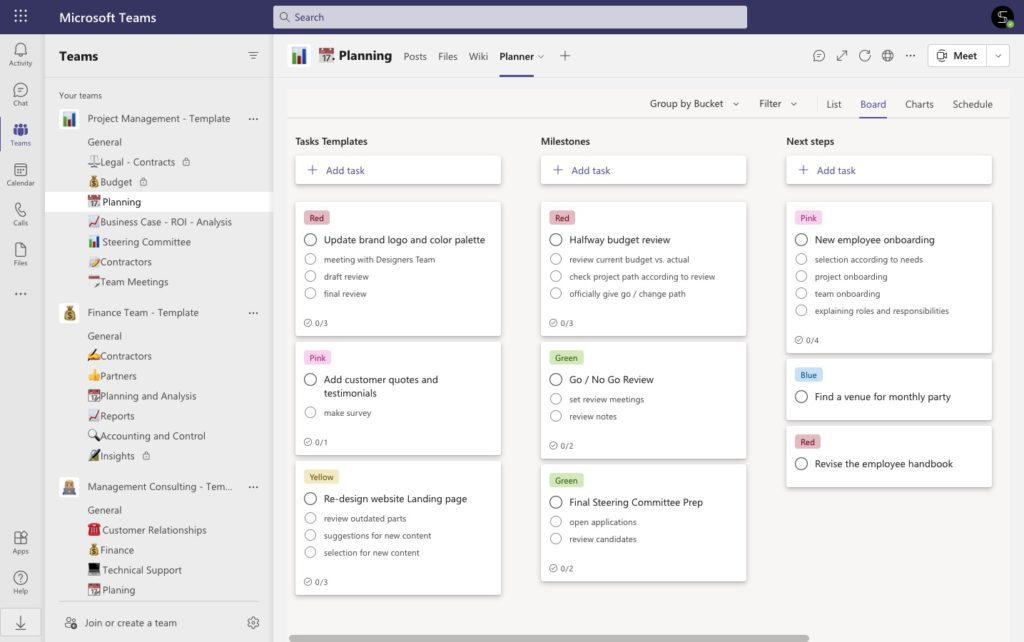
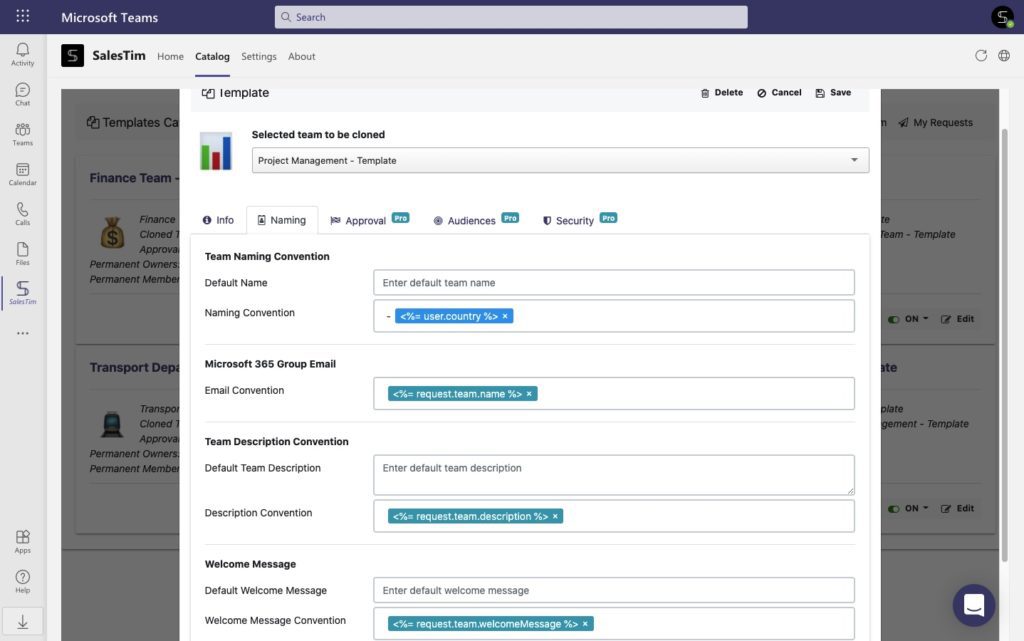
Step 2. Come back to Power Automate flow and instead of Microsoft Teams connector choose nBold.
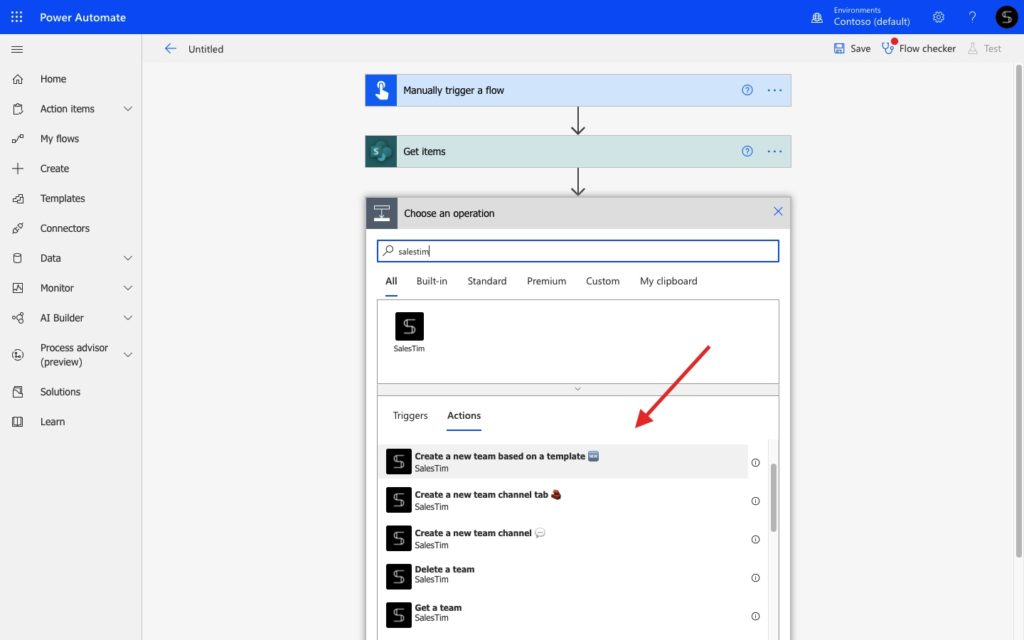
Click on the action – create a team from a template and choose the Project Management template that you have built before.
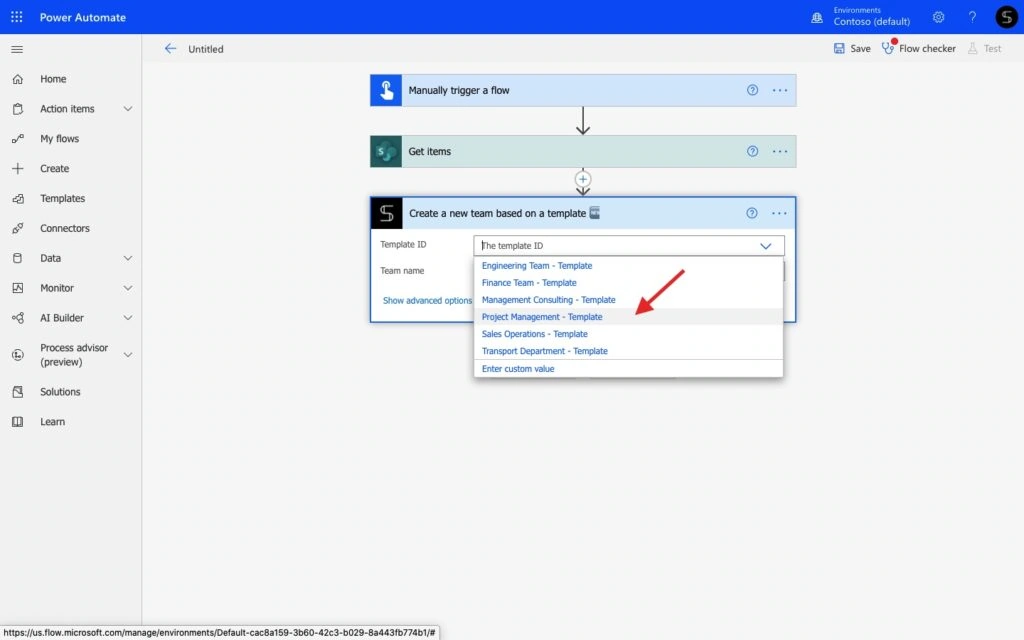
Step 3. Voila! Run the flow and see magic. In a few minutes, you will get fully provisioned teams from your SharePoint list. In this case, you will get a standard team with the General channel and copied private and standard channels, tabs with apps, pre-built planner, cloned files, and folders. Moreover, teams are provisioned with governance settings such as a naming convention, permanent owners and members, privacy setups, and so on.
In this case, you can perform business-oriented scenarios. By using a custom connector, you can scale team creations with pre-built structure and governance settings.
Talk to our team to learn how to build flows customized for your business needs
Approval process for team creation with Forms and Power Automate
Let’s discuss another scenario. Let’s suppose, you do not want everyone in your organization to be able to create teams that can easily lead to Teams sprawl. Therefore, you are about to limit team creation in your organization. For this reason, you can build a flow using Microsoft Forms and Power Automate. Thus, if someone wants to create a team, he will need to fill out a request form.
Step 1. Create a new “Team Creation Request” Form. There you can add all the required information that needs to be filled out. For example
- Requester Name
- Name of the requested team
- Description of the team
- Purpose of team creation
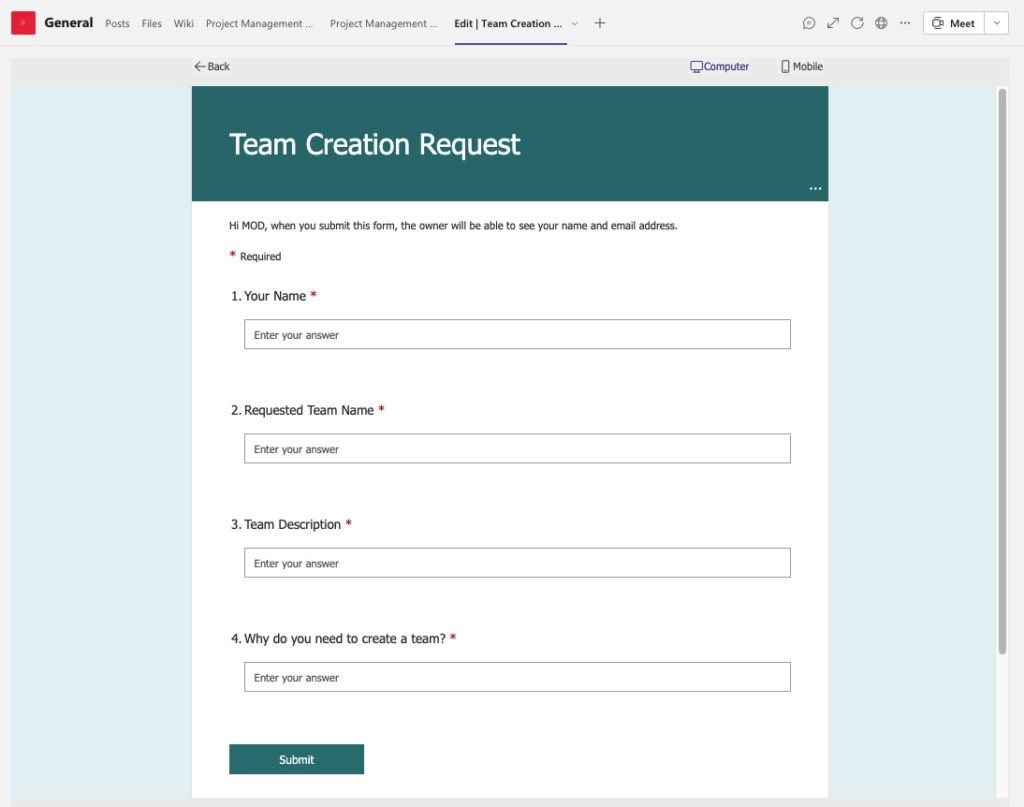
Step 2. Open Power Automate and create an automated flow. Choose Forms connector and click on the “When a new response is submitted” trigger. Then, choose your “Team Creation Request” Form.
And then, choose an action “Get response details” to be able to use answers details as dynamic content
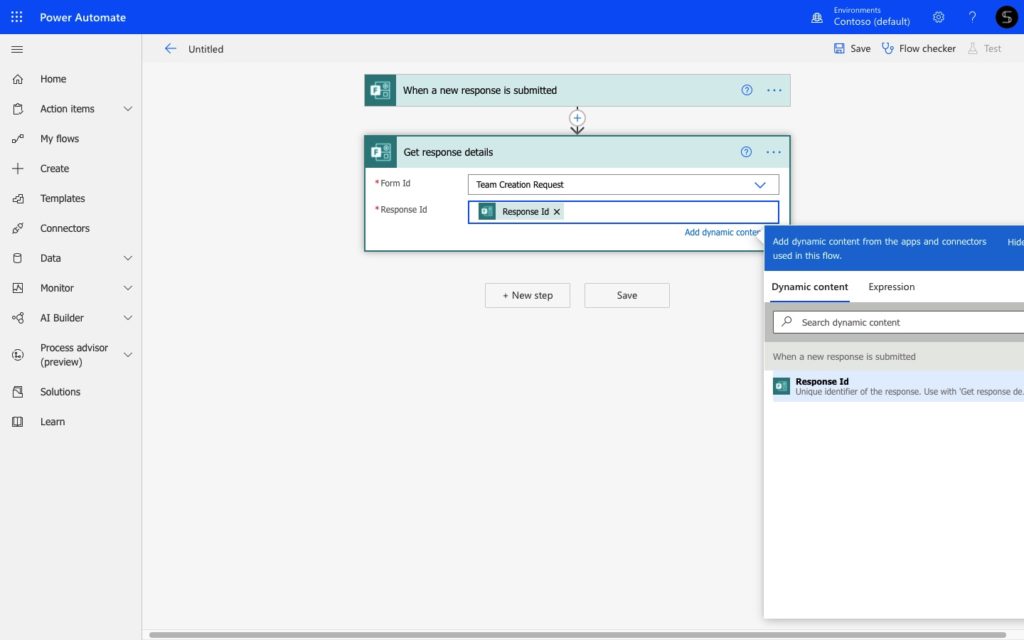
Step 3. Next, we need to build an approval process. To do this, find the Approvals app and choose the action “Start and wait for an approval.”
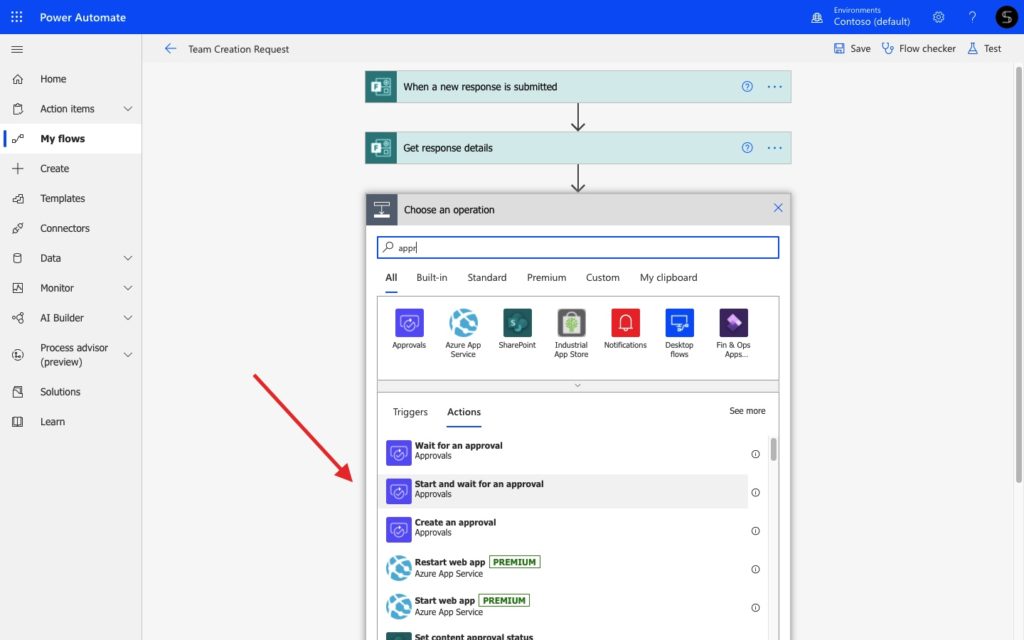
Here you can define an approval type (everyone must approve, first to respond, etc.) Next, type the title and assign this approval to any person in your Office 365 environment. They will get a Teams notification each time when someone has submitted the form.
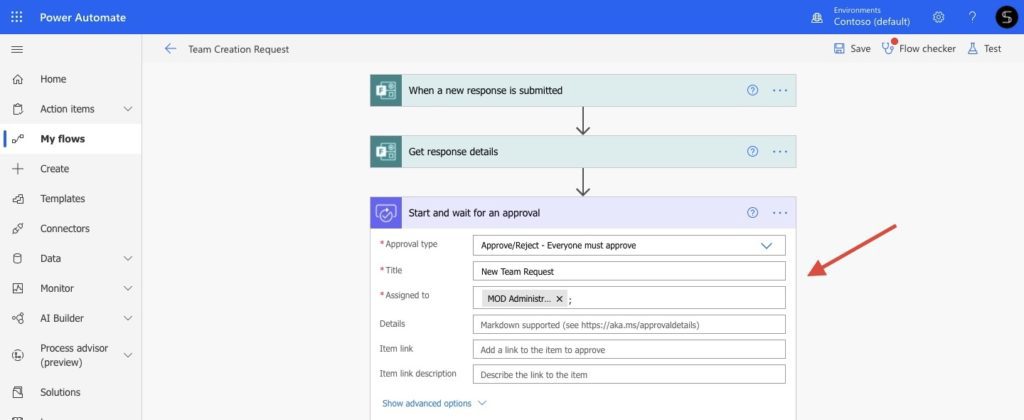
Also, at this step, we need to give all the necessary information for the approver to simplify their decision-making process. For this reason, you can add detailed information with dynamic content from Microsoft Forms with the requester’s responses.
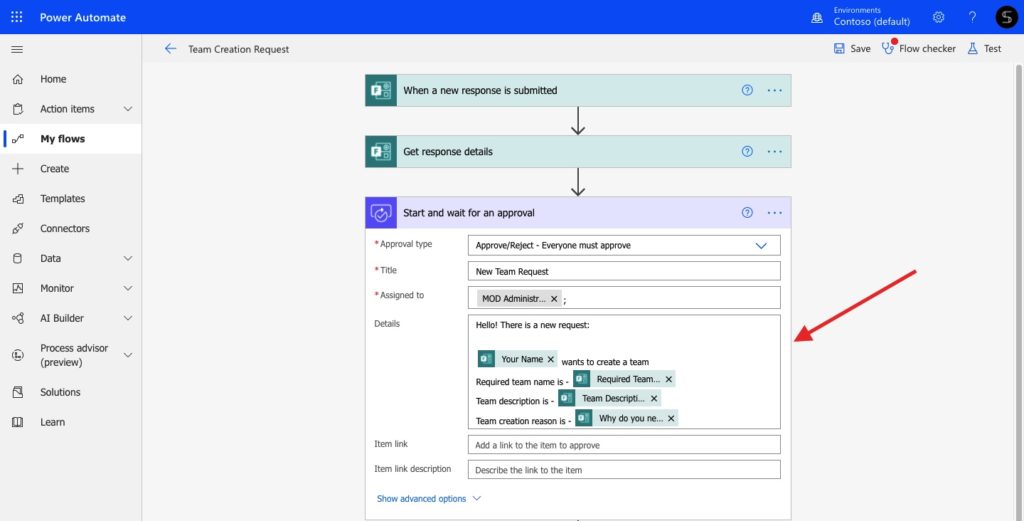
Step 4. Finally, start a new condition with the “Yes” and “No” sections. Here you need to set up the rule: “outcome” is equal to Approve (make sure that the word Approve starts with a capital letter).
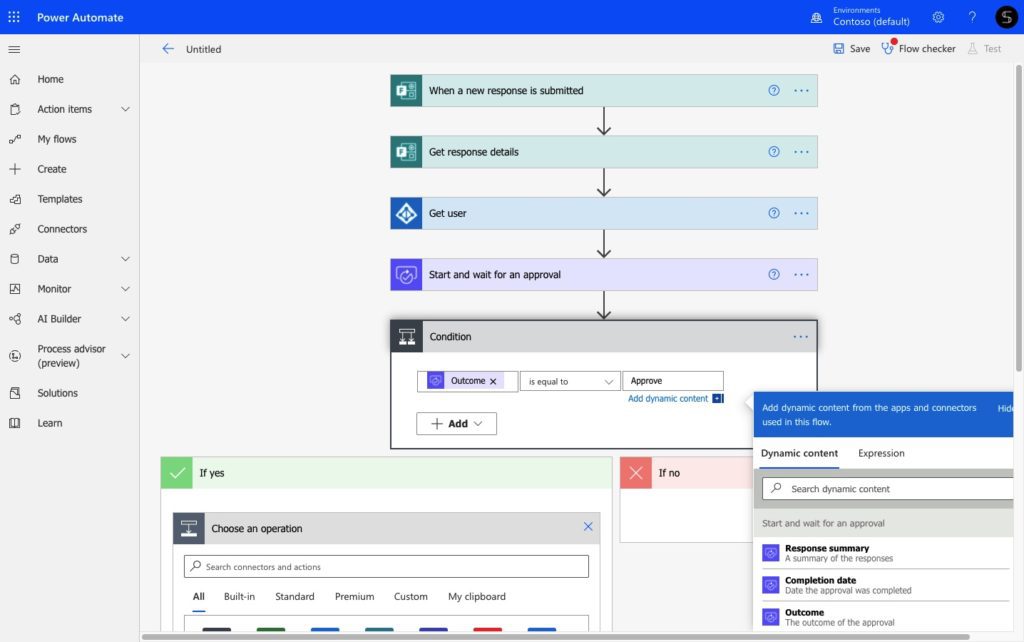
Then, let’s build a condition. If “yes” – choose an action “Create a team” from the Microsoft Teams connector. You can add dynamic content from Form responses to the team’s name and description.
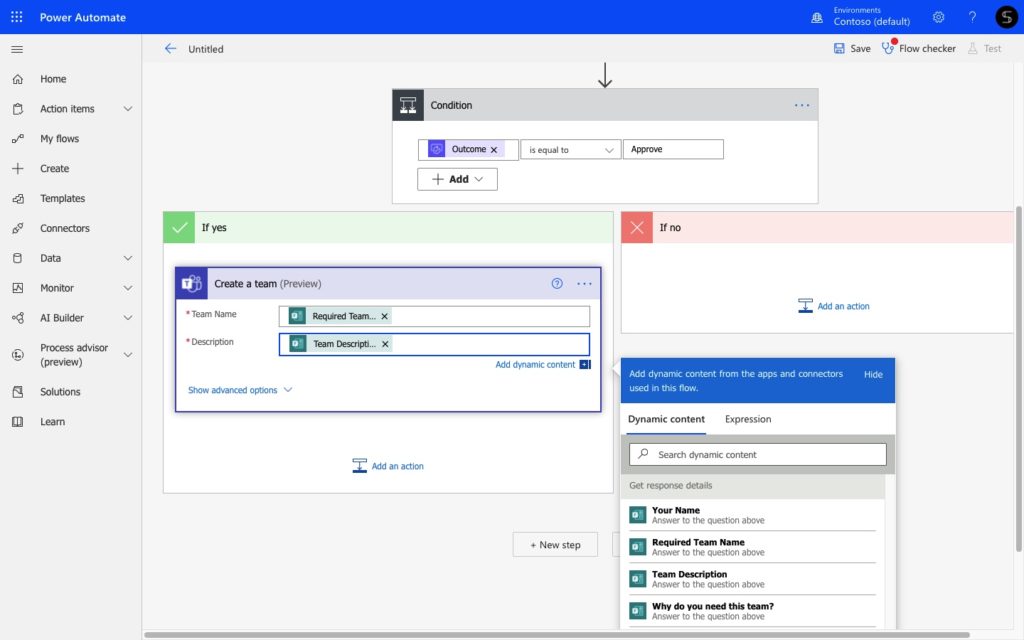
If “no” – let’s send requester an email saying that his request was rejected from the approver.
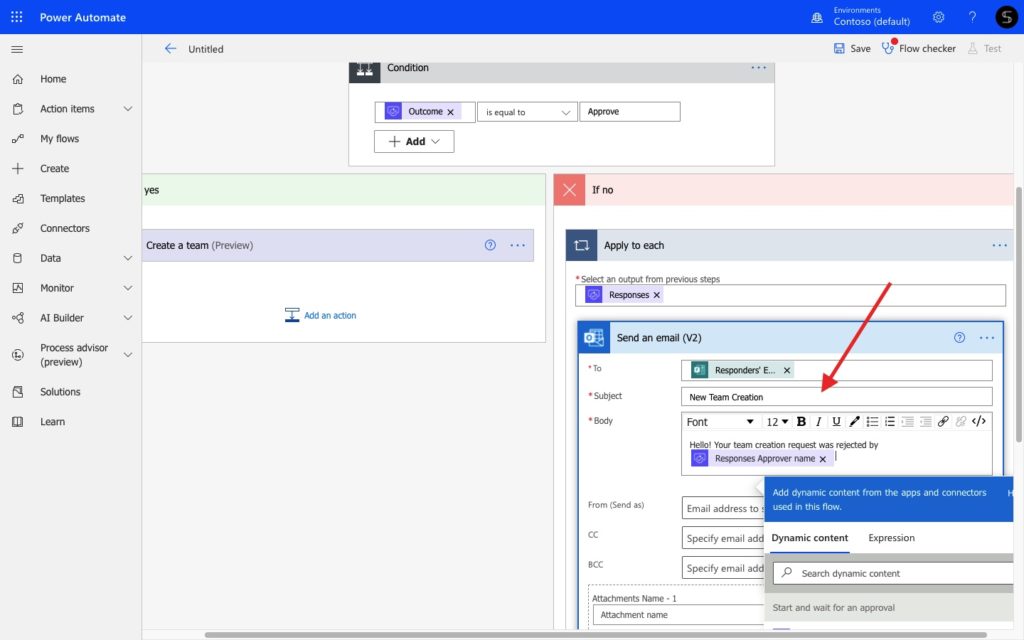
Step 5. Run the flow and see real magic.
Therefore, with this simple workflow, you are able to control team creation in your Microsoft Teams environment. Moreover, very quickly you will get an automatically created team once the request has been approved.
Set Up a Multiple-Stage Approval with Microsoft Teams templates
Remember that we’ve used advanced Microsoft Teams templates technology when building a flow for SharePoint and Microsoft Teams? In the same way, you can manage approval processes for team creation from the Microsoft Teams template. But even easier… 😉
1. Manage Approval Processes at template creation level
The first way to manage approval processes is to add approvers during Microsoft Teams template creation. There are just a few steps to build an approval process:
Step 1. Open nBold in your Microsoft Teams
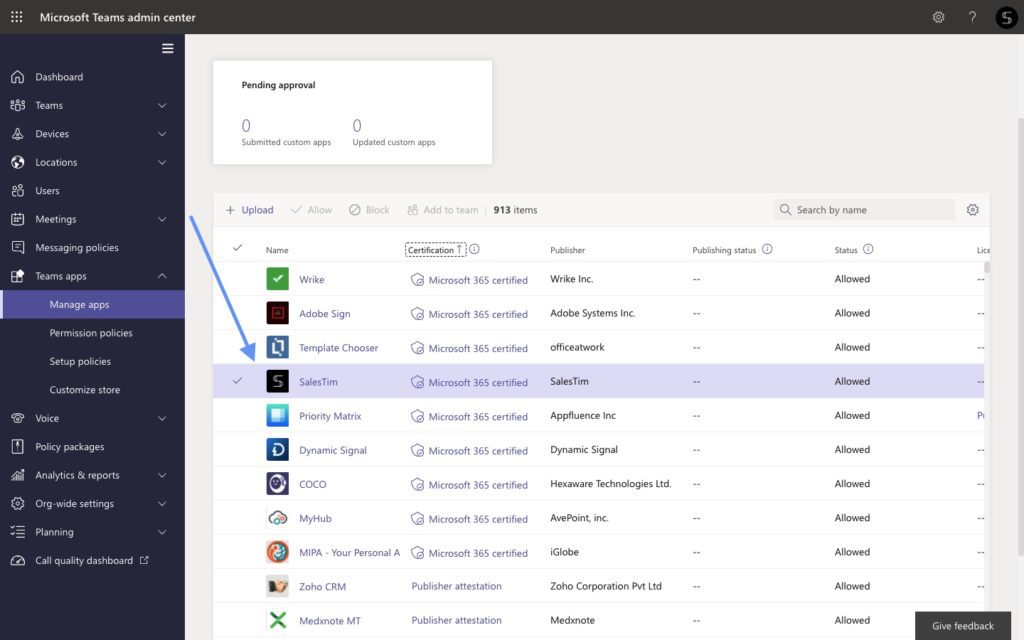
Step 2. Go to Catalog tab and click on +New template
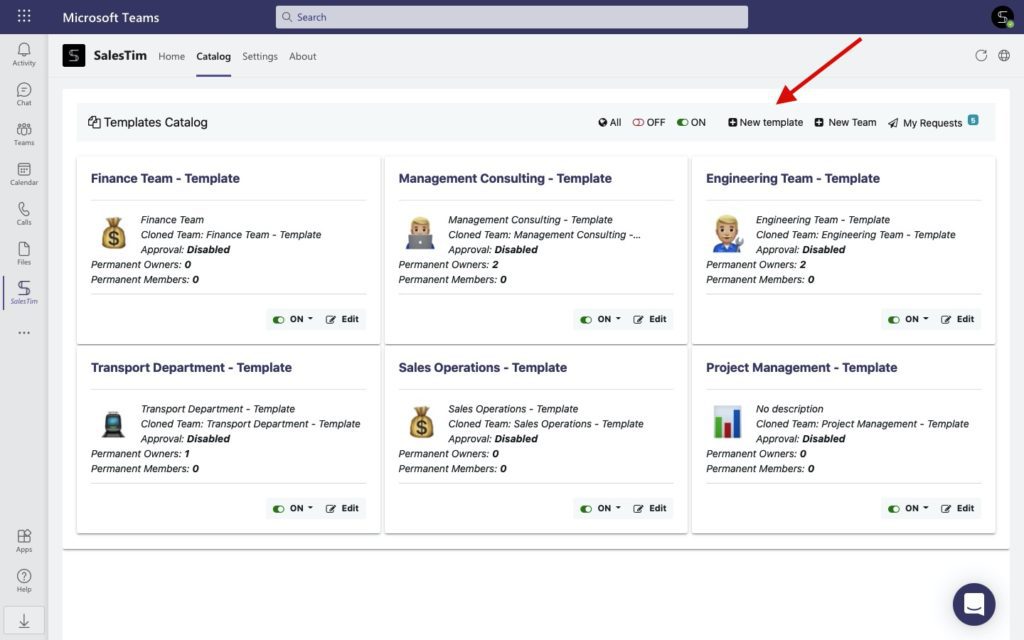
Step 3. Choose an original team (channels, tabs with apps, files and folders will be copied)
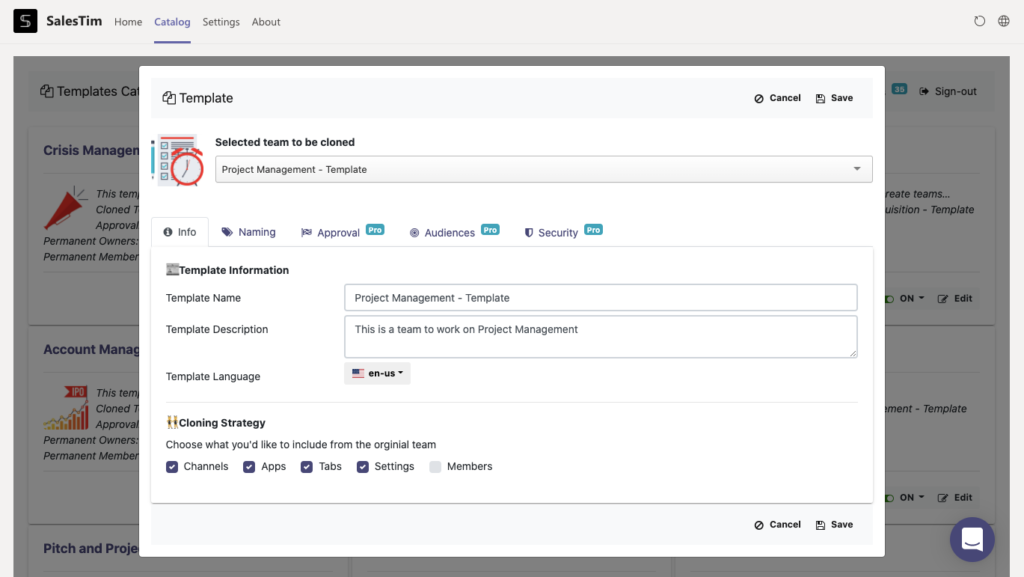
Step 4. Go to “Approval” tab, enable approval and choose any person in your organization
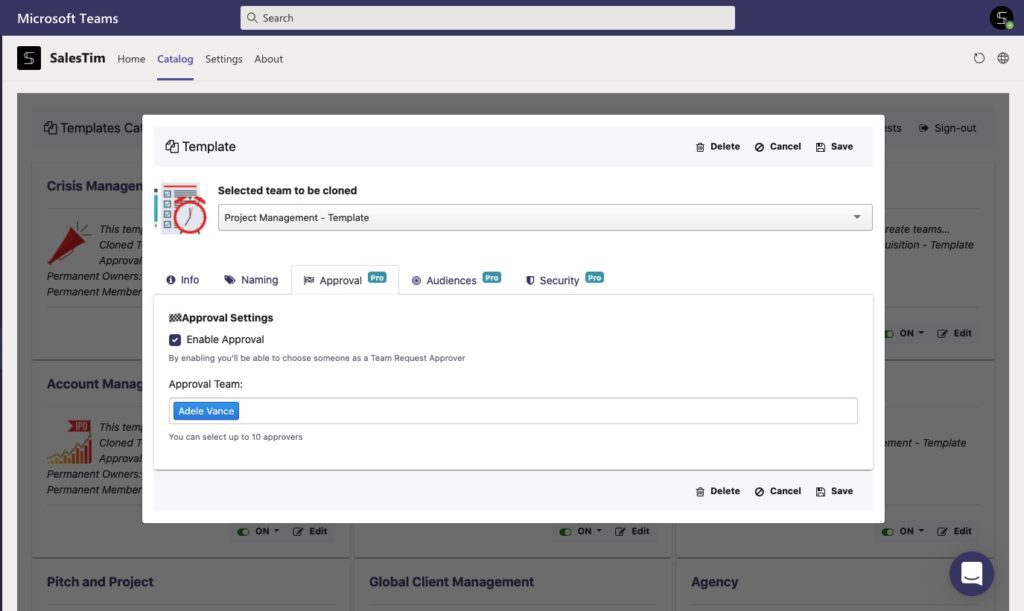
Step 5. Save your template to your own template catalog
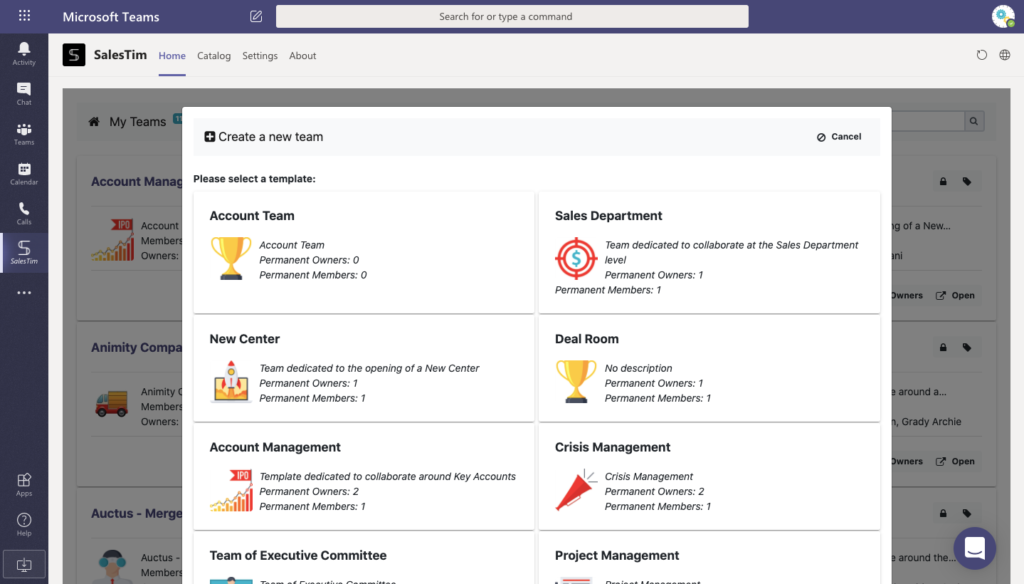
It’s done! Now, when someone wants to create a team from your template, the approver will get an email with all the information about the team creation request. When a request is approved, a team from the template will be created automatically.
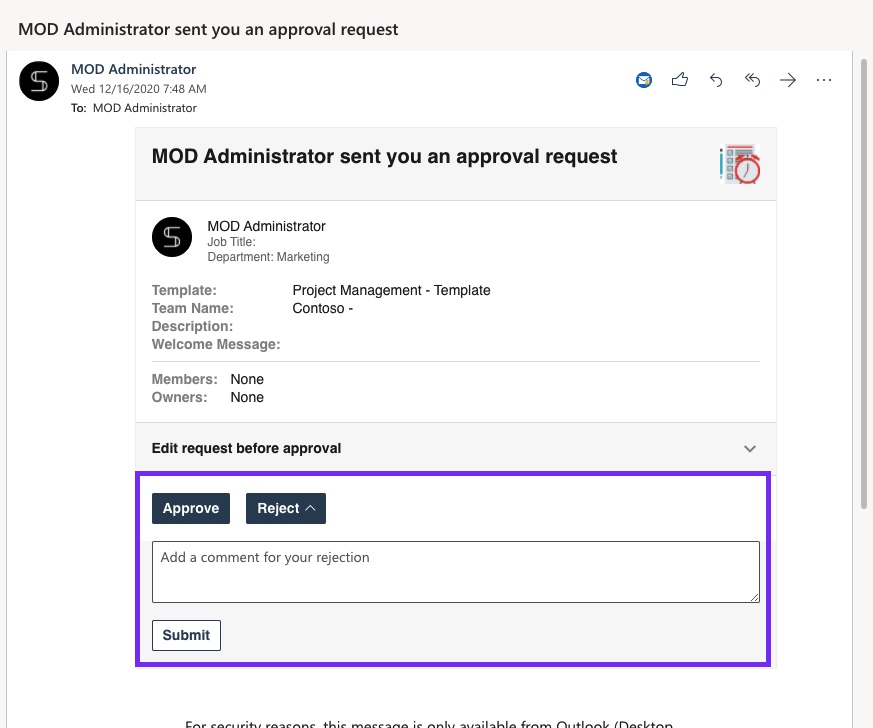
2. Establish a multiple stage approval process
Now, let’s discuss another example. We know that in some organizations, especially in the large ones, you need to set up a multiple-stage approval process. For example, to get approval for team creation, you need to send a request to your operational manager. And after the managers approve, the same request must be approved by the Teams admin. With the nBold connector for Power Automate, you can easily build a flow to maintain this process.
Step 1. Create a project management template (we’ve discussed how to do it above). During the template creation open the “Approval” tab and “enable approval.”
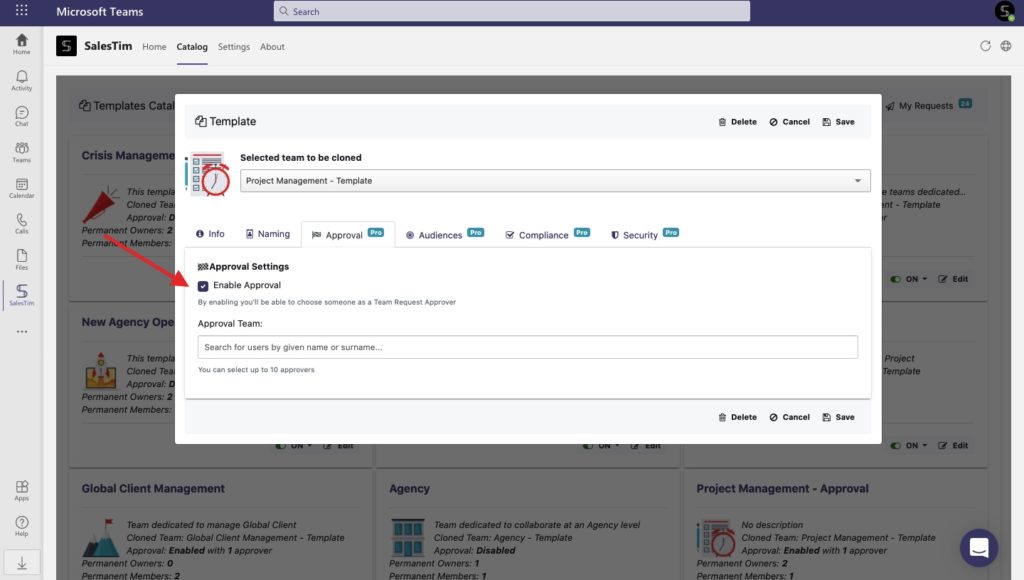
Step 2. Open Power Platform and build an automated flow using nBold connector. Choose the trigger – When a new team creation approval is requested. This trigger runs flow each time someone requests a team creation from your template with enabled approval.
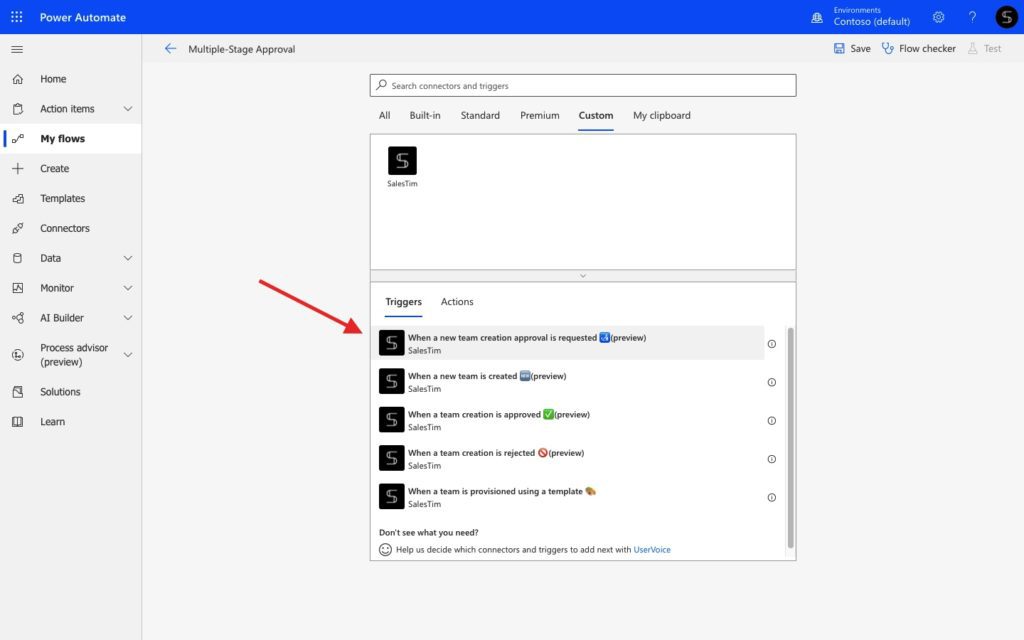
Step 3. Choose an action from the Approvals app “Start and wait for an approval.” Here you can define the different options, for example, wait for all responses, first response, etc.
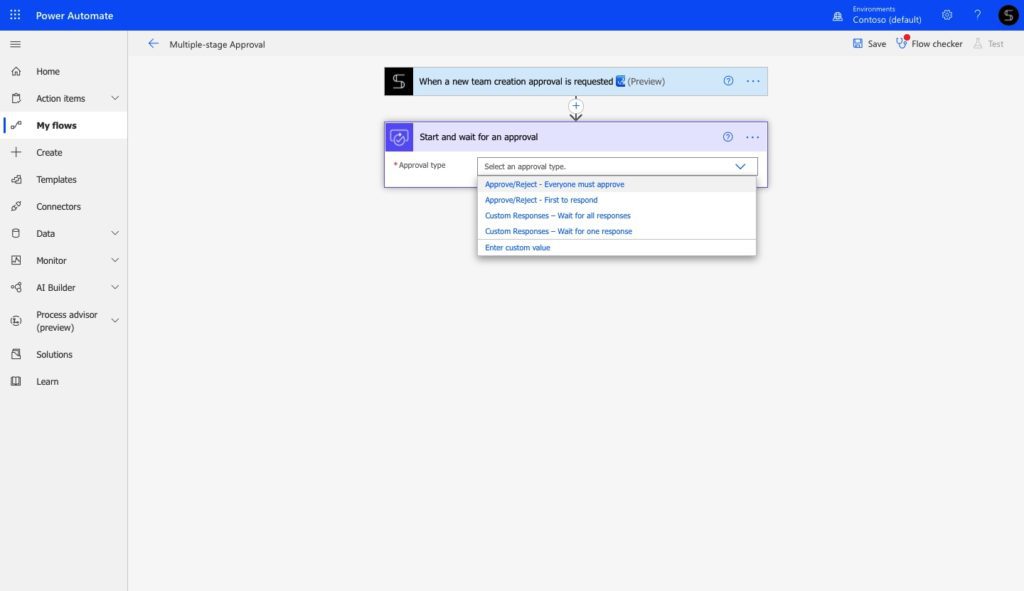
Step 4. Next, you will need to add the condition with yes/no option. We’ve already discussed how this feature works. So, build the process and do not forget this scheme: “outcome is equal to Approve”.

Step 5. Then, you need to scale the system with conditions depending on your use case. In this example, we’ve put 2 steps for the approval process. This means that the second approver will get a message only if the request has been approved before.
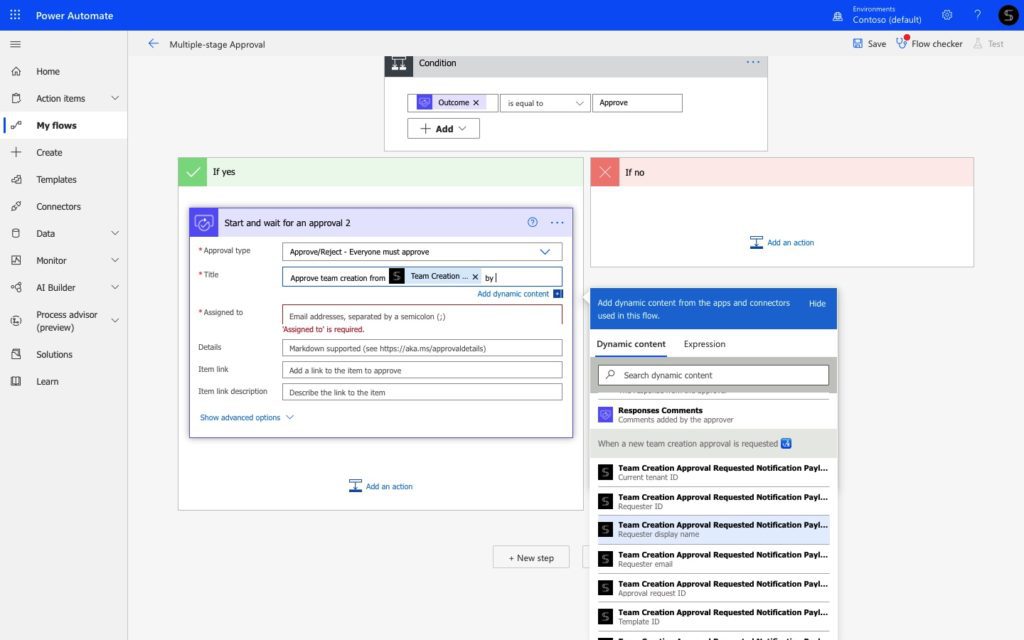
Step 5. Finally, put actions from nBold connector “reject or approve team creation.” With action “approve team creation” provisioning of the requested team will start automatically
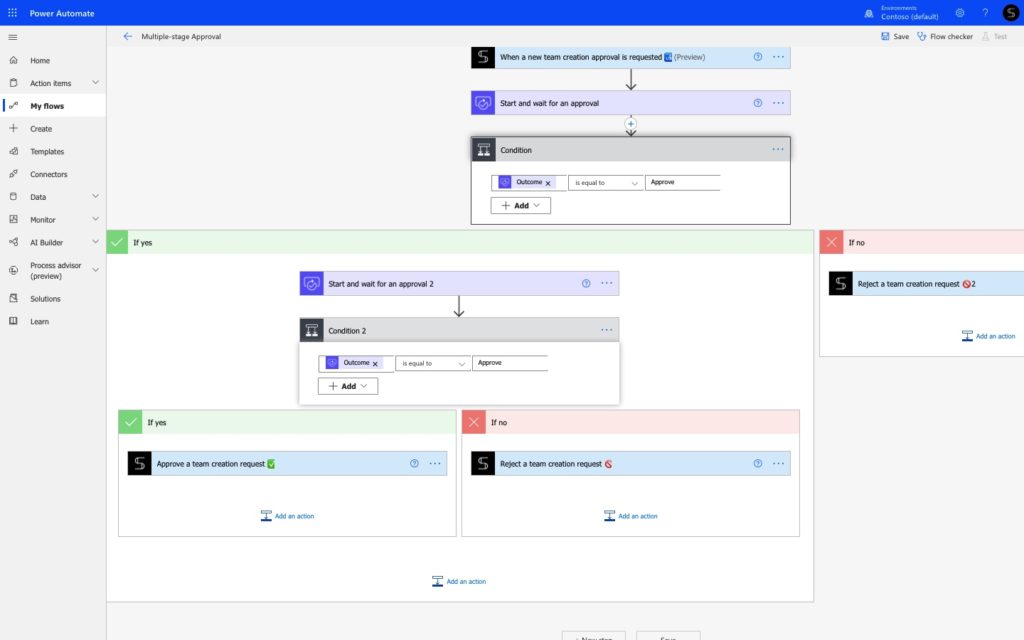
With this flow, you can manage approval processes, limit team creation from the templates, and avoid Teams sprawl.
Power Automate: Create teams from a template using any 3rd party app
Indeed, with the nBold connector you can build a flow for any 3rd party app available in Power Automate. Would you like to create a team from the template when something happens in your internal app? Well, just use the nBold connector! Here are some examples.
Create a team from Dynamics 365
Using Dynamics 365 to manage sales processes? Read our article about Microsoft Teams integration with CRMs.
With the nBold connector you can create a team when a new record is created in Dynamics 365
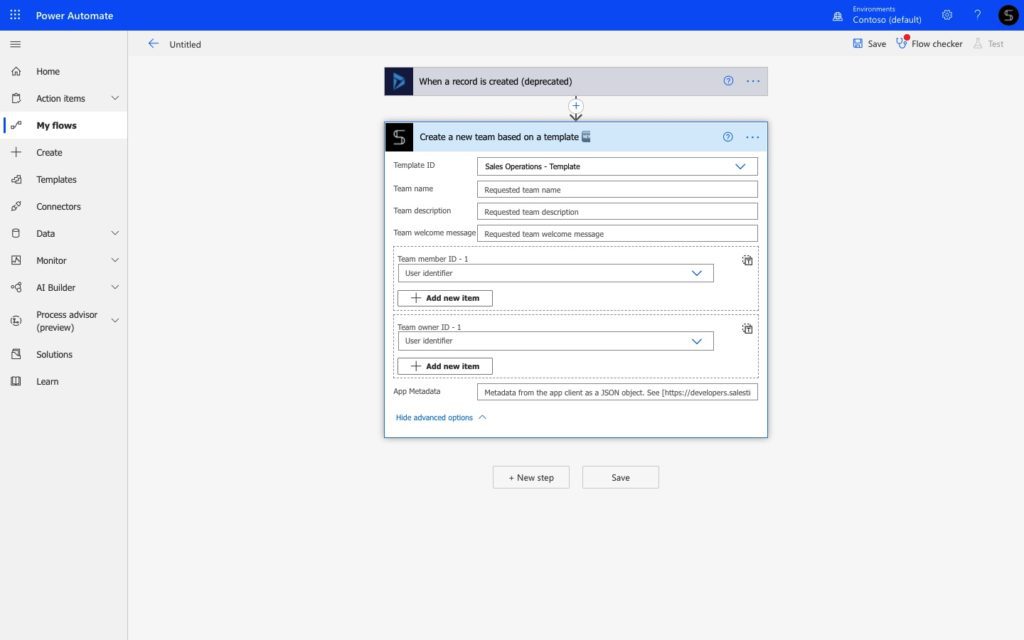
Hence, when someone creates a record, a fully provisioned team will appear in your Microsoft Teams environment with:
- Copied standard and private channels
- Cloned files and folders
- Tabs with apps
- Governance settings, such as naming convention, permanent membership, and so on
Create a team from Salesforce
With nBold for Salesforce you are able to collaborate on Salesforce records with your team members even if they do not have a Salesforce license. Based on Power Apps technology, nBold has many features for those who want to improve their collaboration around Microsoft Teams and Salesforce:
- Create a fully provisioned team from Salesforce Accounts
- Create a team from Salesforce Opportunities
- Open Microsoft Teams files without leaving Salesforce
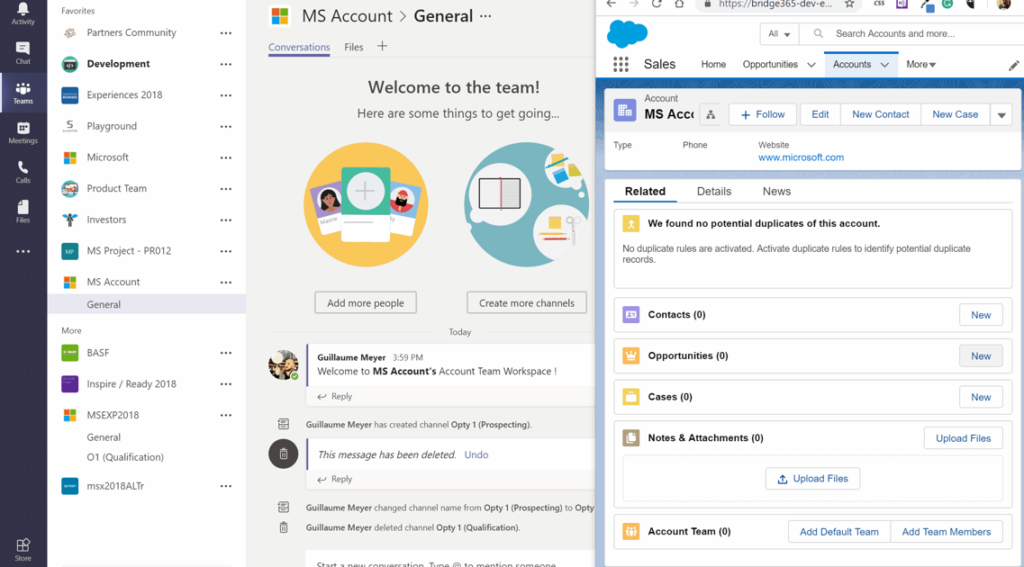
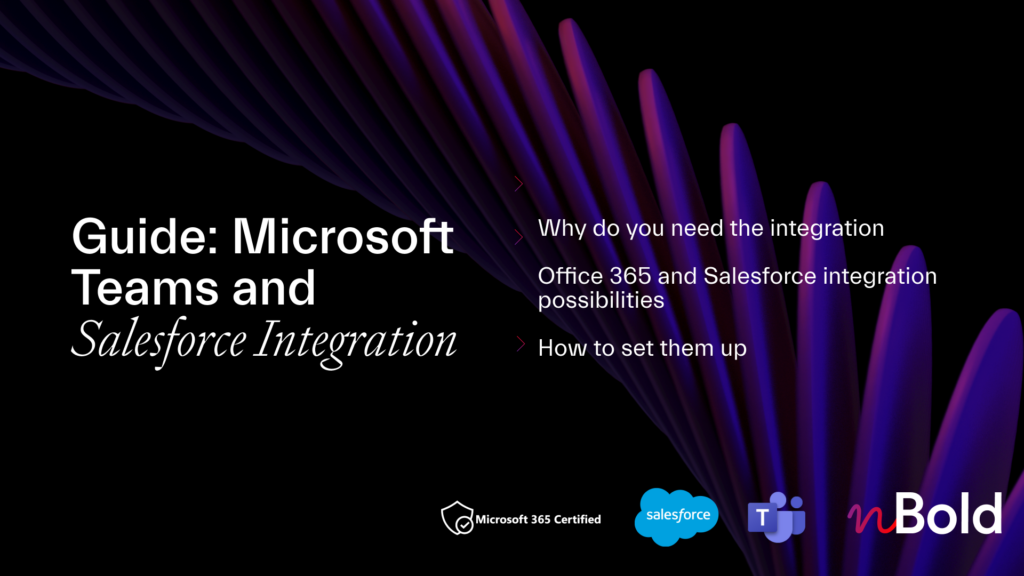
Guide: Microsoft Teams and Salesforce Integration
- Why you should integrate Salesforce with Teams
- All integration possibilities
- Most demanded use cases
- How to set up the integrations
Create a team from any 3rd party app
As we mentioned before, you are able to create a team based on template from any 3rd party app that is available in Power Automate. Jira, Trello, Asana, Insightly…capabilities are endless!
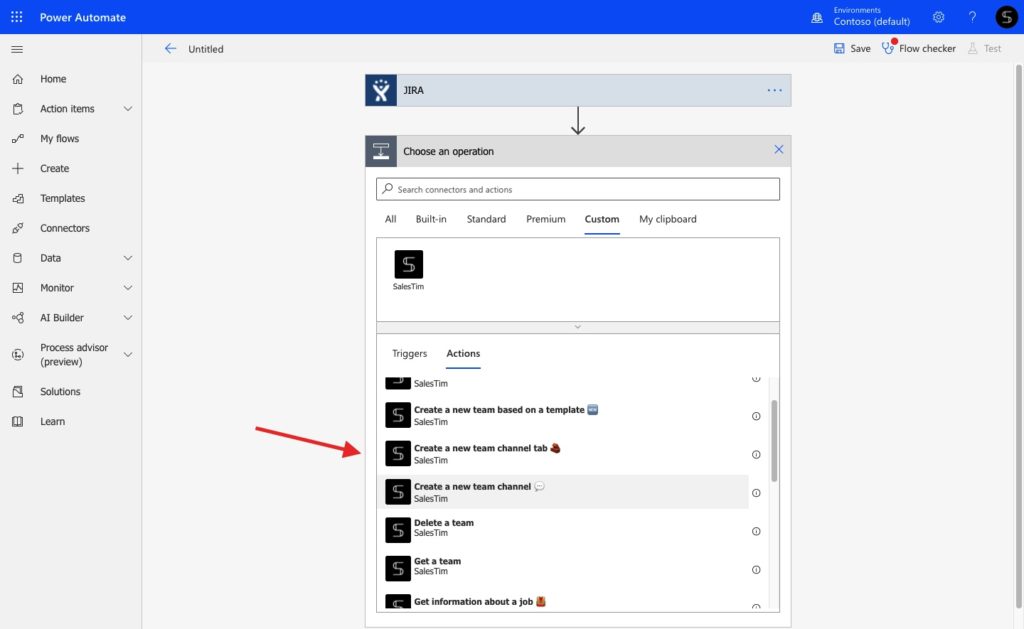
Book a call with our team to learn how to build an automation process for your organization.
